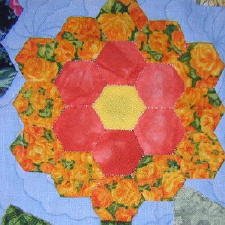RESEARCH NOTE - MEDIA FRAMING: I've got a pile of research materials to read for my core area proposal (the to-be-rewritten one, if you remember), and since that's going to be a big part of my reading for a while you're going to have the pleasure of quotes from and comments on what I'm reading. I'm going to preface each with the "Research Note" heading, though, so you'll know to move along if your eyes glaze over at this kind of thing.
Tonight I read a study on media framing in coverage of the Crown Heights riots in 1991, where an Hasidic Jewish man was killed by rioters. Earlier, as a result of an accident with another car that wasn't his fault, a car driven by Yosef Lifsh, a Lubavitch Jew, struck and killed a young black boy and injured a young girl. Due in part to the long-standing tensions between the Caribbean-American community of the children and the Lubavitch sect, the situation quickly developed into a riot and, later that day, in author Carol B. Conaway's words, "a group of 10 to 15 young male blacks surrounded and assaulted Yankel Rosenbaum, a 29-year-old Hasidic man. He was stabbed four times...and died three hours after identifying [Lemrick] Nelson as his assailant".
Conaway, an African American Jew, describes how the riot began:
An ugly rumor that the Hatzolah ambulance crew [run by the Lubavitch Jews] had ignored the critically injured children started to circulate in the crowd. It fed the longstanding belief in the Caribbean-American and African-American communities that Hatzoloh Service catered exclusively to the Jewish community. They and nearby Lubavitchers argued fiercely; some of the younger blacks in the crowd began hurling rocks and bottles at the Lubavitchers...(t)he crowds soon grew too large to be controlled by the police. Caribbean- and African-American youths continued their rampage through the neighborhood...
In 1993, the Girgenti Commission classified the Crown Heights disturbances as bias-related. They found an explicit element of bias in the many marches, demonstrations, and criminal activities that occurred during the four days of disturbances. For example, the Commission cites the time one afternoon when marchers went through Crown Heights shouting "Death to Jews"... As the young males of African descent surrounded Yankel Rosenbaum [who was Hasidic but not a Lubavitcher], they shouted, "Kill the Jew!" and "There's a Jew, get the Jew."
The article discussed how the tension was between cultures - a Caribbean-American community and a tightly-knit, closed Hasidic Jewish sect - yet the NY Times and the NY Post both covered it as a black/white racial conflict even though the quotes they themselves used from those involved were explicitly about culture, most specifically anti-Semitic comments from the Caribbean residents. The NY Post soon shifted to an anti-Semitic frame for its coverage, while the NY Times continued in its racial frame for two years, again despite a preponderance of anti-Semitic quotes in its pages, until the Girgenti Commission Report was released.
A media frame is the context the journalists place a story in; often they have to assimilate and interpret complex situations quickly, and present them clearly and understandably to the public. That's easier when there's already a larger, society-wide "story" to plug the event into - thus, a "frame" to organize the information to make it more understandable. In this instance, the NY Times initially picked the "racial story" to form a backdrop for this situation, given its various markers, which is to some degree understandable at first but less so as evidence piled up that a different "story" was more appropriate. After the markers began to show that there was a strong component of anti-Semitism, the NY Times was showing framing bias by continuing to use the "racial story" anyway. The reason why that's important is made clear in this quote from the article:
This inability to conceive of persons of African descent as having interaction more complex than racial conflicts with people whose skin color is white is symptomatic of a larger problem in American society itself - one that fails to define and understand individuals and communities of color as persons who have a complete range of humanity in their being, both for good and for evil. Until this singular perspective and dialectic of race changes in journalism and admits these complexities, this failure in understanding will persist.
The article is "Crown Heights: Politics and Press Coverage of the Race War That Wasn't", by Carol B. Conaway in Polity, Fall 1999, and is derived from Conaway's earlier research paper.
UPDATE: My earlier post mistakenly identified the driver as the one killed; the article correctly outlined the events, and the post has been substantially rewritten to better reflect the Crown Heights situation itself as portrayed in the article. Thanks to Meryl Yourish, who pointed out the mistake in comments, and then asked:
Does your paper have any follow-through? The two communities got together after the riot to build bridges, bridges that exist today. They admitted there were problems...on both sides. Community leaders stepped up to the plate and got each group to start learning that the others were human, too.
The answer is no - the article does not go into the ways the communities learned to live together after the riots, focusing rather on how the genesis of the conflict emerged from misunderstandings based on cultural and religious differences, not race. Conaway says,
The Lubavitchers formed an insular self-sufficient community here as they had done in Eastern Europe [having immigrated to the US to escape the holocaust], and made no group effort to befriend, or in most cases, even acknowledge, their Caribbean-American neighbors...many members of the Caribbean population interpreted these actions as arrogance and aloofness, and began to adopt negative stereotypes of the Lubavitchers...
The focus of the article is the media framing. The research paper on which the article (which I couldn't find online) is based is here (PDF file).


0 Comments:
Post a Comment
<< Home